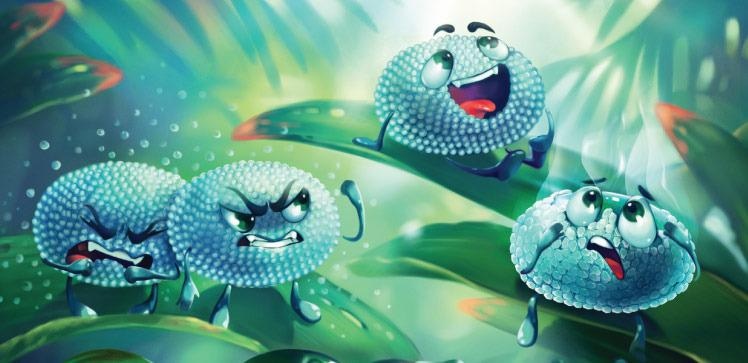Researchers at King Abdullah University of Science and Technology (KAUST) have developed a comprehensive framework for analyzing the evaporation behavior of liquid marbles. The new framework helps gain better insights into these tiny biological structures.
 Using high-speed imaging, KAUST researchers discover that liquid–particle and particle-particle interactions critically influence the evaporation behavior of liquid marbles. Image Credit: © 2021 Ella Maru Studio.
Using high-speed imaging, KAUST researchers discover that liquid–particle and particle-particle interactions critically influence the evaporation behavior of liquid marbles. Image Credit: © 2021 Ella Maru Studio.
An investigation of the behavior of aphids, or tiny insects living within plant galls, led to the first-ever discovery of liquid marbles. Aphids consume nectar and secrete sticky, sugary substances into their restricted living space. The insects coat the sticky fluid with wax particles to avoid drowning in their own secretions. This creates small liquid marbles that have a hydrophobic outer layer to which the insects cannot stick.
Researchers soon understood the value of such a system for conveying very small amounts of intact liquid over a surface without “wetting” it. Pollution monitoring and miniature biochemical reactors are further applications of liquid marbles.
“Even though the water surface of a liquid marble is covered by hydrophobic (water-repellent) particles, they can still evaporate faster than bare water droplets. This counterintuitive fact stoked our curiosity,” stated Adair Gallo Jr, the PhD student who worked with Himanshu Mishra and collaborators on the study.
How particle size, liquid-particle interactions and friction between particles impact the evaporation behavior of marbles is not well understood at present. The researchers investigated marbles made of particles with various hydrophobic natures, surface roughness and sizes, ranging from nano to micro.
Gallo and colleagues used high-speed imaging to identify that particle-particle and liquid-particle interactions critically impacted evaporation behavior. Gallo grouped them into three categories. First, marbles made of particles with moderate interparticle friction and high liquid-particle adhesion maintained their total surface area intact as they deflated, resulting in flattened shapes and faster evaporation. A majority of the marble examples belonged to this category.
Second, Gallo performed experiments with nanoparticles-coated microscale silica particles that demonstrated ultra-water repellence.
As these liquid marbles evaporated, they ejected particles from their surface and remained spherical; we had not expected to see this. This happens because of very low liquid–particle and interparticle forces. Curiously, this case showed the same evaporation rates as bare water droplets.
Adair Gallo Jr, PhD Student, KAUST
The third category included sticky nanoparticles that tend to interact closely with each other but not with the liquid inside. With the evaporation of the liquid, a multilayered coating was formed by pushing the particles from the water surface. Although the marbles retained a spherical shape, they evaporated at considerably slower rates due to the thicker particle layers.
This data helped the researchers develop a mathematical model that precisely estimates the evaporation behavior of all the liquid marbles investigated in this study and various other published studies.
Our curiosity-driven research has led to a solid analytical framework for thinking about these soft squishy objects.
Himanshu Mishra, KAUST
The curious task of watching liquid marbles dry.
KAUST researchers study liquid marbles to build a mathematical model that accurately predicts their evaporation behavior. Video Credit: © 2021 KAUST.
Journal Reference:
Gallo Jr, A., et al. (2021) How particle–particle and liquid–particle interactions govern the fate of evaporating liquid marbles. Soft Matter. doi.org/10.1039/D1SM00750E.